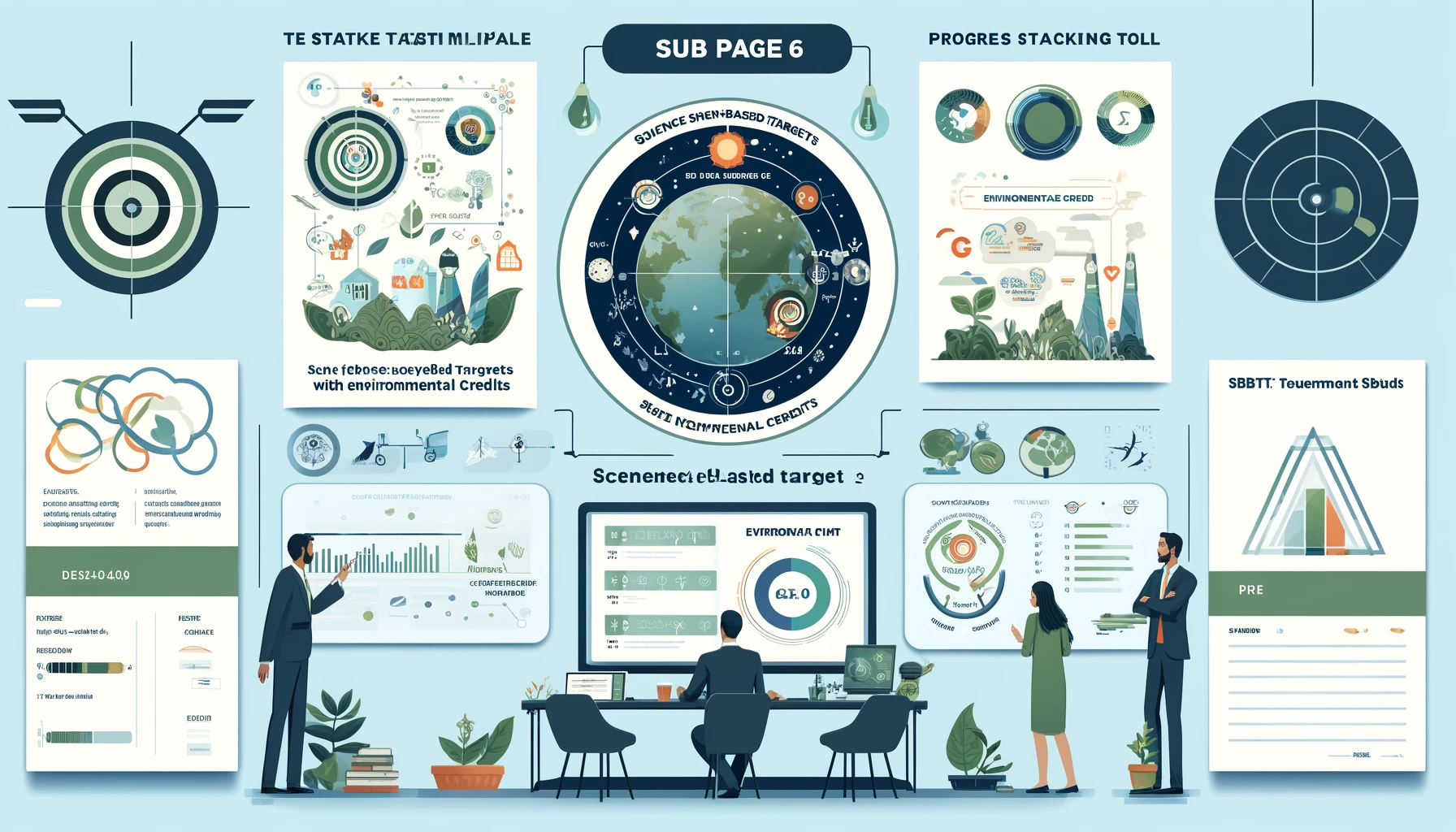
In the realm of corporate responsibility and environmental stewardship, aligning with Science-Based Targets initiative (SBTi) methodologies is no longer optional; it’s imperative. This subpage delves into the nuanced application of SBTi methodologies using environmental credits as strategic tools. Here, we bridge the gap between ambitious climate goals and actionable strategies, providing you with templates for target setting, measuring progress, and comprehensive reporting
Understanding SBTi Methodologies
- Core Principles: A primer on the SBTi’s core methodologies, underscoring the importance of ambitious target setting that aligns with current climate science.
- Environmental Credits’ Role: Exploring how high-quality environmental credits, including carbon, biodiversity, and renewable energy certificates, can be effectively utilized within SBTi frameworks to meet and exceed emissions reduction targets.
Setting Science-Based Targets
- Template for Target Setting: An interactive template designed to help businesses set robust, realistic, and science-aligned emissions reduction targets, incorporating the potential role of environmental credits.
- Guidance on Integration: Step-by-step instructions on how to integrate environmental credits into target setting, emphasizing additionality, permanence, and alignment with overall sustainability goals.
Measuring Progress Towards Targets
- Progress Tracking Template: A downloadable tool for businesses to systematically measure and track their progress towards their SBTi-aligned targets, with a section dedicated to tracking contributions from environmental credits.
- Adjusting Strategies: Insights on how to adjust corporate strategies based on progress tracking results, including optimizing the use of environmental credits for maximum impact.
Reporting on SBTi Alignment
- SBTi Reporting Guide: A comprehensive guide detailing how to report on SBTi alignment, with a focus on transparency, accountability, and the strategic use of environmental credits.
- Case Studies: Highlighting exemplary case studies of businesses that have successfully reported their SBTi achievements, leveraging environmental credits as a key component of their strategy.
Visual Enhancements
- Templates for Target Setting and Progress Tracking: Customizable templates that businesses can use to set their SBTi targets and track progress, including specific sections for the integration of environmental credits.
- Infographics: Simplified visual guides to understanding SBTi methodologies and the role of environmental credits, designed for quick reference and sharing.
Key Takeaway
Environmental credits are not just supplementary tools but are central to setting, achieving, and reporting on science-based targets. Through strategic selection and integration, these credits can empower businesses to not only meet but surpass their SBTi-aligned sustainability objectives, paving the way for a more sustainable and responsible corporate future.
Conclusion
Embracing SBTi methodologies with the strategic use of environmental credits underscores a commitment to science-aligned climate action. As businesses embark on this journey, the resources provided here aim to clarify, simplify, and empower their efforts towards a more sustainable tomorrow.